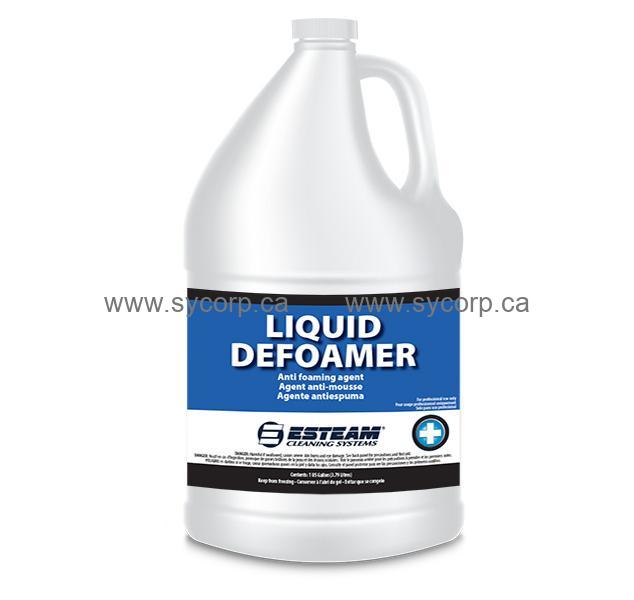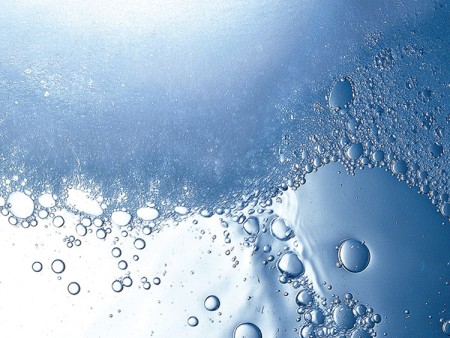Exploring Different Kinds Of Anti-Foam Control Solutions for Numerous Industries
The management of foam in commercial processes is a critical aspect that can affect both item quality and operational effectiveness across different fields. Different industries, such as food and drink, drugs, and wastewater therapy, face unique challenges connected to foam formation, requiring tailored anti-foam remedies. From silicone-based agents to eco-friendly alternatives, the choice of appropriate control procedures varies significantly. Understanding these distinctions is vital for optimizing processes and making certain conformity with sector requirements. What implications do these differing solutions have for functional techniques and environmental factors to consider?
Understanding Foam Formation
Foam development is a complex physical sensation that happens when gas is caught within a fluid, producing a stable structure of bubbles. This process is influenced by numerous aspects, consisting of the residential properties of the liquid, the nature of the gas, and outside conditions such as temperature level and stress (Anti-Foam Control Solutions). The stability of foam is largely determined by the surface stress of the viscosity and the fluid, as these buildings dictate how easily bubbles can persist and develop
In several commercial applications, foam is an unwanted result that can hinder procedures, minimize efficiency, and influence product top quality. The formation of foam is frequently intensified by agitation, blending, or chain reactions, resulting in boosted operational difficulties. Comprehending the devices behind foam formation is vital for establishing efficient control methods.

Kinds of Anti-Foam Representatives
Numerous kinds of anti-foam representatives are used across industries to combat the challenges presented by foam formation. These representatives can be broadly categorized right into two primary types: silicone-based and non-silicone-based anti-foam agents.
Silicone-based anti-foam agents are very reliable due to their unique residential or commercial properties. They consist of polydimethylsiloxane (PDMS) and can significantly decrease surface stress, permitting for quick foam collapse. Their security at high temperatures and in different pH settings makes them ideal for varied applications, including manufacturing and chemical handling.
On the other hand, non-silicone-based anti-foam representatives consist of organic substances such as fatty acids, esters, and waxes. They normally work by providing a physical barrier that disrupts foam development.
In addition, some anti-foam representatives combine both silicone and non-silicone components to boost efficiency across details conditions. Recognizing the distinctive features and applications of these anti-foam representatives is critical for choosing the right service for foam control difficulties in various industrial setups.
Applications in Food and Drink
In the food and beverage industry, efficient foam control is vital to ensuring product quality and procedure efficiency. Extreme foam can bring about operational challenges, such as equipment overflows, lowered handling ability, and variances in product texture. Various applications within this field, consisting of developing, milk processing, and check out here juice manufacturing, need tailored anti-foam solutions to resolve details frothing concerns.
For example, in brewing, foam stability is important for both the top quality of the beer and the effectiveness of the developing procedure. Anti-foam representatives are employed to decrease unwanted foam throughout fermentation and packaging, making certain a smoother process and preserving preferred flavors. Likewise, in dairy products processing, the manufacturing of items like yogurt and cheese requires cautious foam monitoring to stop spillage and preserve texture.
In juice production, foam can obstruct filtering procedures, impacting return and clarity. Here, the application of proper anti-foaming agents can optimize production prices and boost product appearance - Anti-Foam Control Solutions. In general, choosing the right anti-foam control options tailored to the special demands of each application is necessary for keeping top quality and performance in the food and beverage industry
Solutions for Pharmaceuticals
Reliable monitoring of foam generation is critical in the pharmaceutical industry, where accuracy and purity are vital. Foam can disrupt various procedures, consisting of blending, filtering, and sterilization, potentially compromising item high quality and effectiveness. The view option of ideal anti-foam solutions is vital to preserve functional effectiveness and regulative compliance.
Silicone-based anti-foam agents are extensively utilized due to their effectiveness and compatibility with a series of pharmaceutical formulas. These agents function by minimizing surface stress, thus destabilizing his response the foam structure. Furthermore, non-silicone choices, such as natural oils and fats, are obtaining traction for their eco-friendliness and biodegradability, aligning with industry trends towards lasting techniques.
It is important to take into consideration the certain application when picking an anti-foam option, as the formula must not detrimentally influence the energetic components or the end product. Additionally, compatibility with cleaning and sterilization procedures is important to make certain that the anti-foam representatives do not present pollutants. Continual tracking and screening of foam control measures can improve performance, making certain that pharmaceutical processes remain optimum and compliant with stringent market standards.

Wastewater Therapy Methods
As industries progressively concentrate on sustainability, executing effective wastewater treatment techniques has come to be vital for mitigating ecological effects. Wastewater treatment is a vital process that ensures the risk-free disposal or reuse of industrial byproducts, thus minimizing air pollution and preserving water sources.
One key strategy includes using biological treatment methods, such as activated sludge processes, which utilize microorganisms to break down natural contaminants. This approach is commonly matched by advanced purification and disinfection methods, making sure the effluent meets regulatory requirements.
Furthermore, chemical therapy alternatives, such as coagulation and flocculation, are utilized to remove put on hold solids and dissolved compounds. The assimilation of anti-foam agents is vital in this context, as foam can impede therapy performance and make complex stages of information and splitting up.
In addition, membrane layer modern technologies, including reverse osmosis, are acquiring grip due to their capability to generate top notch effluent appropriate for reuse in various applications. Generally, a mix of these approaches tailored to particular market demands can dramatically improve the effectiveness of wastewater treatment, adding to a more sustainable future.
Final Thought
Efficient foam control is vital throughout various markets to boost item quality and process efficiency. The option of suitable anti-foam representatives, whether eco-friendly or silicone-based non-silicone alternatives, plays a critical duty in addressing specific frothing challenges encountered in food and beverage processing, drugs, and wastewater therapy - Anti-Foam Control Solutions. Continued expedition of diverse anti-foam services will help with better operational results while ensuring ecological compliance and source healing, therefore adding to lasting practices within these markets
Various sectors, such as food and beverage, drugs, and wastewater therapy, face one-of-a-kind difficulties related to foam formation, demanding customized anti-foam options. Various applications within this sector, including brewing, milk handling, and juice manufacturing, demand tailored anti-foam services to deal with particular foaming issues.
Anti-foam agents are employed to decrease undesirable foam during fermentation and packaging, making certain a smoother process and maintaining desired flavors. These agents function by minimizing surface stress, thereby destabilizing the foam framework. The selection of appropriate anti-foam representatives, whether environment-friendly or silicone-based non-silicone alternatives, plays an essential role in resolving specific lathering challenges encountered in food and drink processing, drugs, and wastewater treatment.